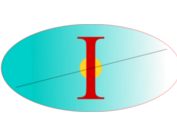Citation:
| fattal1996.pdf | 902 KB |
Abstract:
The representation of a quantum system by an evenly spaced Fourier grid is examined. This grid faithfully represents wave functions whose projection is contained in a rectangular phase space. This is mathematically equivalent to a band limited function with finite support. In general, have packets decay exponentially in classically forbidden regions of phase space. This idea is then used first to optimize the rectangular shape of the Fourier grid, leading to exponential convergence. Nevertheless, in most cases the representation is suboptimal. The representation efficiency can then be extremely enhanced by mapping the coordinates. The mapping procedure reshapes the wave function to fit into the rectangular Fourier shape such that the wasted phase space area is minimal. It is shown that canonical transformations, which rescale the coordinates, improve the representation dramatically. A specific scaling transformation enables the representation of the notoriously difficult Coulomb potentials. The scaling transformation enables one to extract almost as many converged eigenstate energies as there are grid points. The method is extendible to more than one dimension, which is demonstrated by the study of the H + 2 problem. This scaling transformation can bridge the gap between quantum chemistry and quantum molecular dynamics by enabling the treatment of electronic problems in the vicinity of Coulomb potentials by grid methods developed for molecular dynamics.
Notes:
RBaer-Publication



